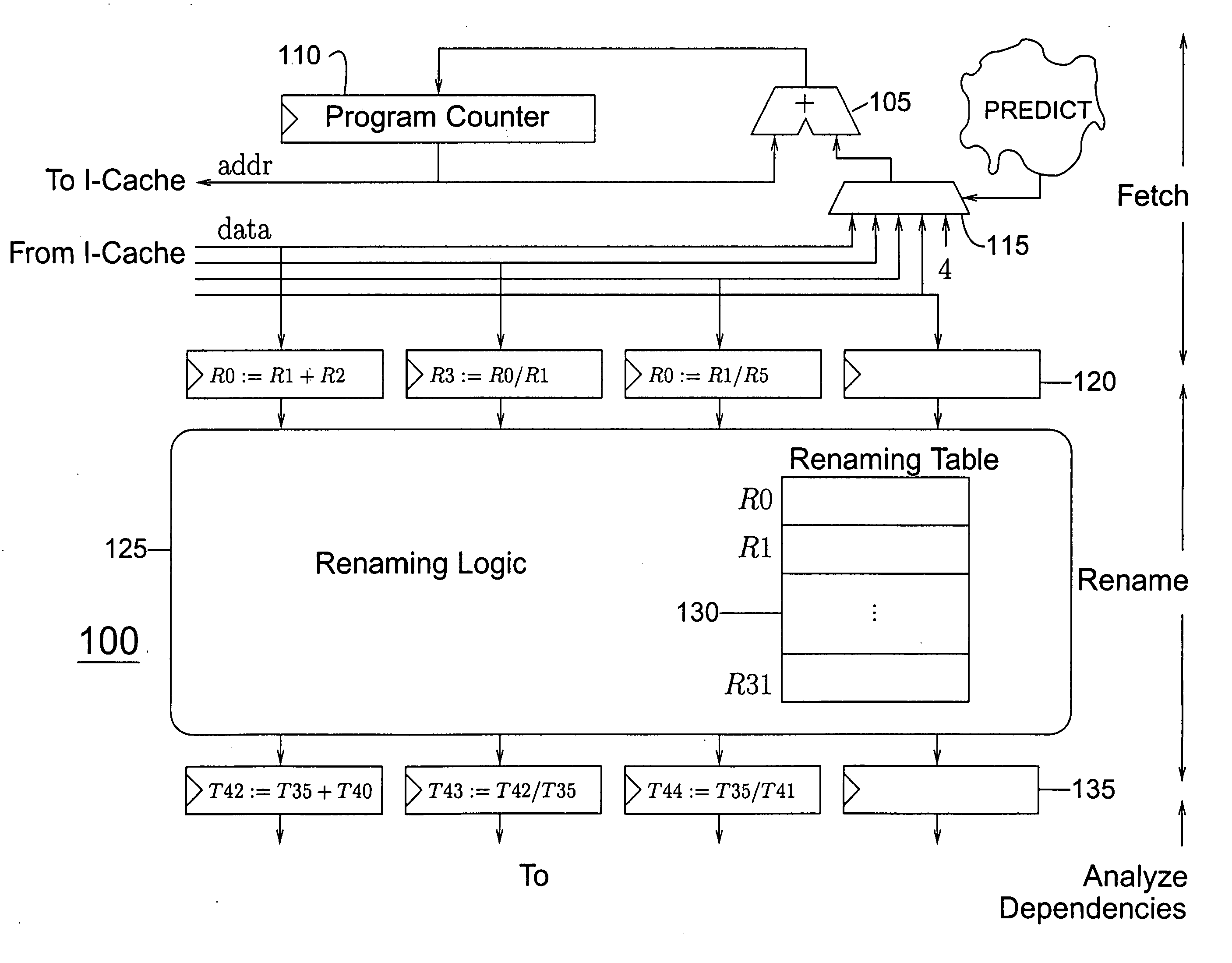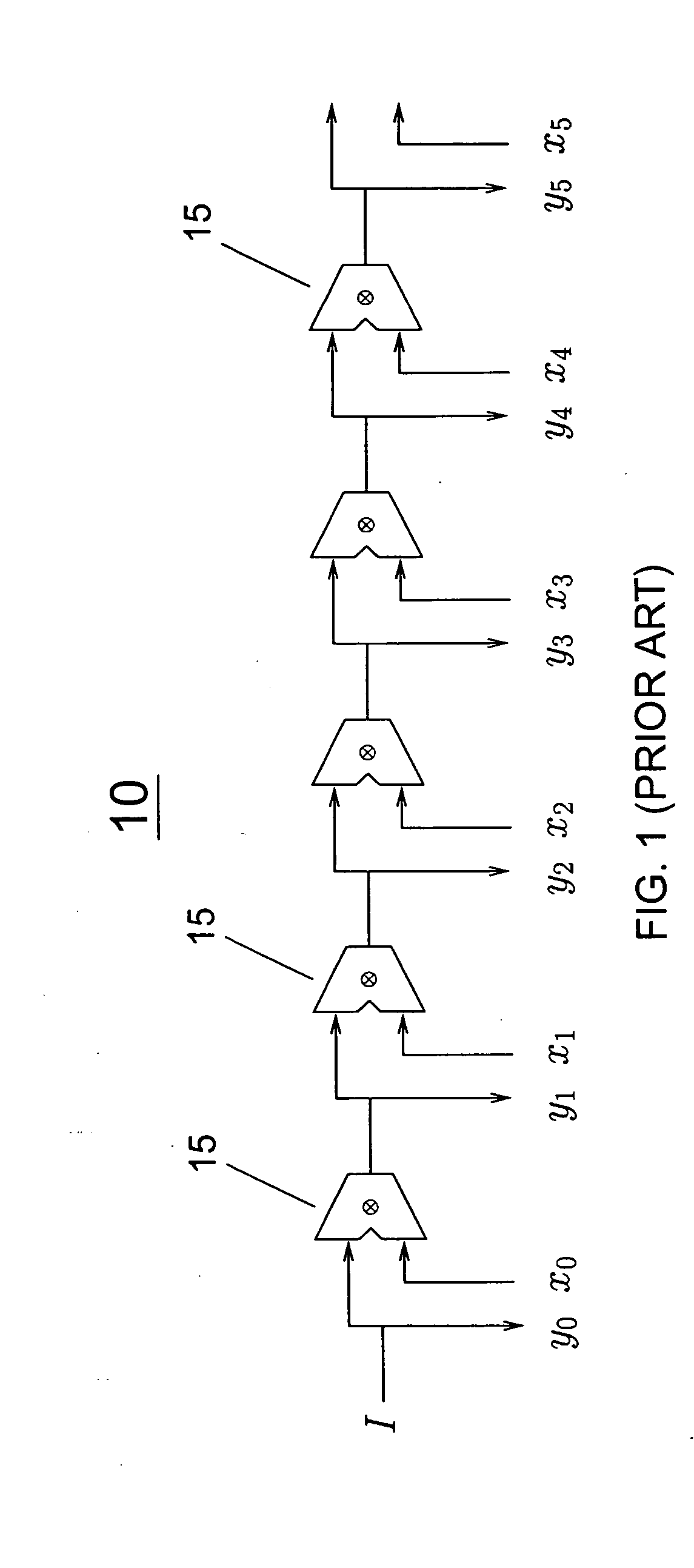Efficient circuits for out-of-order microprocessors
a microprocessor and out-of-order technology, applied in the field of parallel prefix circuits and superscalar processor circuits, can solve the problems of large critical path length, large area of circuitry used, and long critical path length, so as to improve the performance of superscalar processors, avoid performance penalties, and improve the performance of many circuits.
- Summary
- Abstract
- Description
- Claims
- Application Information
AI Technical Summary
Benefits of technology
Problems solved by technology
Method used
Image
Examples
example
[0425] Before describing the optimized datapath in detail, we outline the ideas behind the optimized datapath and show an example. The datapath passes to each execution station only its arguments and accepts only its result. Register results are filtered by two separate filters as they propagate from individual execution stations to the root of the datapath tree. One filter propagates only the most recent committed value of every register and updates the committed register file at the root of the tree. The other filter propagates the most recently modified value of every register and its ready bit partly or all the way up through internal switches of the datapath tree. To read an argument register, an execution station searches for the register's most recently modified value through some of the internal switches on its way to the root of the datapath tree. If it fails to find a modified value within the tree, it reads the register's committed value from the committed register file a...
PUM
 Login to View More
Login to View More Abstract
Description
Claims
Application Information
 Login to View More
Login to View More - R&D
- Intellectual Property
- Life Sciences
- Materials
- Tech Scout
- Unparalleled Data Quality
- Higher Quality Content
- 60% Fewer Hallucinations
Browse by: Latest US Patents, China's latest patents, Technical Efficacy Thesaurus, Application Domain, Technology Topic, Popular Technical Reports.
© 2025 PatSnap. All rights reserved.Legal|Privacy policy|Modern Slavery Act Transparency Statement|Sitemap|About US| Contact US: help@patsnap.com



